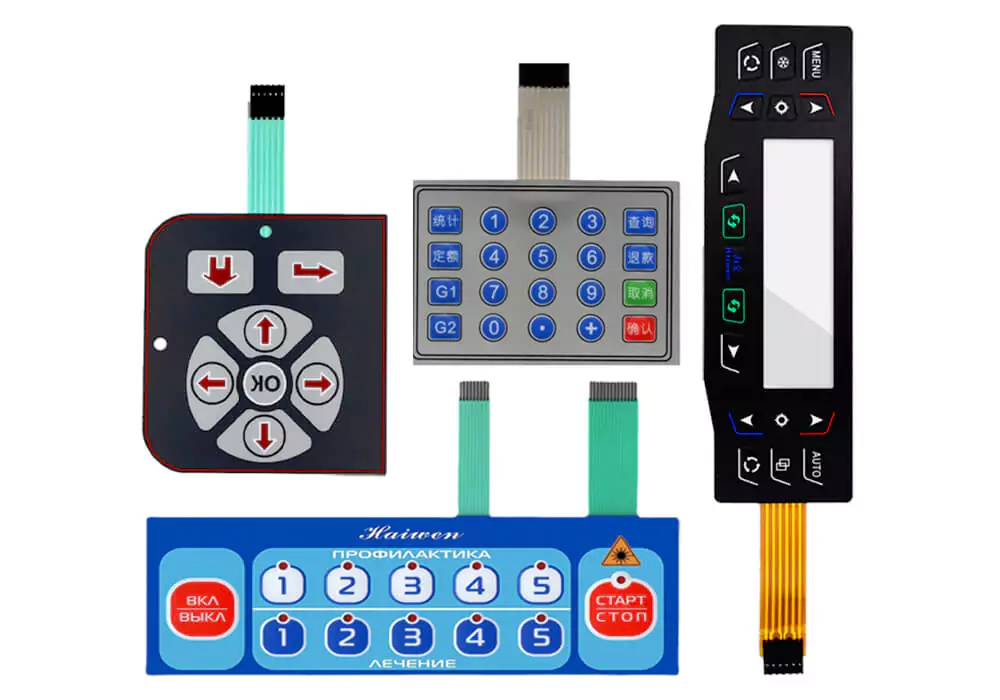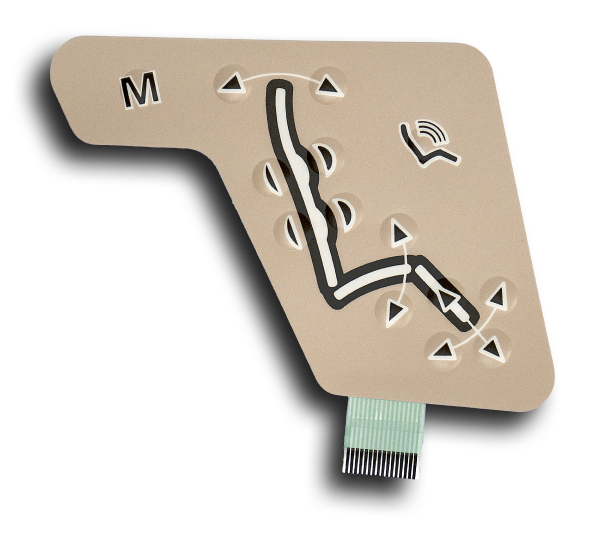5 industries transformed by membrane switch technology
Understanding the Value of Membrane Layer Switch Over in Modern Electronics
Membrane buttons are indispensable parts in modern digital gadgets. They supply a mix of functionality and layout that boosts customer interaction. Their sturdy and light-weight nature makes them ideal for different applications. As industries evolve, the demand for modification and progressed functions grows. Comprehending how membrane layer changes add to innovation exposes their value fit the future of electronic devices. What lies in advance for this modern technology?
The Fundamentals of Membrane Change Innovation
Although usually ignored, membrane switch innovation plays a crucial function in the modern electronic devices landscape - membrane switch. These gadgets, made up of numerous layers, act as individual interfaces for different electronic items, ranging from family home appliances to clinical equipment. A normal membrane layer switch contains a graphic overlay, a spacer layer, and a circuit layer, which are carefully constructed to produce a useful interface.When pressure is used to the overlay, the circuit layer is finished, allowing signals to be transferred to the tool. This innovation is recognized for its flexibility, enabling personalization in shape, functionality, and design to satisfy details customer needs. Additionally, membrane buttons are slim and light-weight, making them suitable for applications where space is a premium. Their durability and resistance to environmental aspects better boost their appeal, ensuring they can stand up to extreme problems while keeping functionality. In general, membrane button modern technology is indispensable to creating efficient and user-friendly electronic gadgets

Trick Benefits of Membrane Switches Over
Membrane switches deal a number of crucial advantages that make them a preferred selection in various digital applications. Their layout enables a compact type variable, allowing manufacturers to create light-weight and smooth gadgets. Furthermore, membrane buttons are resistant to dirt, wetness, and chemicals, which boosts their resilience and long life sought after settings. The responsive comments provided by these buttons can enhance customer experience, making them user-friendly and very easy to operate.Furthermore, membrane layer switches can be personalized with varied graphics and shades, allowing for unique branding chances. The production process is usually economical, particularly for high-volume manufacturing, as it minimizes setting up time and streamlines layout. Membrane switches require very little upkeep, adding to lower overall functional costs. These benefits emphasize their expanding popularity in contemporary electronic devices, where dependability and easy to use interfaces are important.

Applications Across Various Industries
The versatility of membrane layer switches over allows their prevalent adoption across different markets. In the clinical area, they are frequently made use of in diagnostic tools and person monitoring systems, providing a long lasting user interface resistant to impurities. The automobile industry makes use of membrane layer buttons for dashboard controls, enhancing customer experience with sleek styles that hold up against rough conditions. In consumer electronics, they serve as control board for devices such as microwaves and coffee machine, providing an easy to use interface that is simple to clean. The aerospace field uses membrane switches in cockpit controls, where integrity and space performance are paramount. Furthermore, the industrial field leverages these buttons in machinery and control systems to ensure robust procedure popular settings. This wide series of applications highlights the adaptability of membrane layer buttons, making them integral parts in boosting performance and user interaction throughout diverse technological landscapes.
Customization and Layout Flexibility

Future Trends in Membrane Layer Switch Growth
Emerging fads in membrane layer switch development show an expanding emphasis on enhanced performance and integration with wise technologies. As customer need for more innovative electronic tools boosts, makers are concentrating on developing membrane layer changes that not only serve standard functional duties however also integrate attributes like touch level of sensitivity, backlighting, and haptic feedback.Furthermore, innovations in materials are anticipated to enhance sturdiness and environmental resistance, making membrane switches over suitable for diverse read this post here applications in markets such as health care, automotive, and customer electronic devices. The integration of capacitive touch modern technology is likely to end up being a lot more common, permitting sleeker styles and boosted customer interfaces. membrane switch.Additionally, the rise of the Internet of Things (IoT) is triggering the advancement of membrane switches that can communicate wirelessly with various other devices, boosting interconnectivity. Generally, the future of membrane layer switch technology shows up appealing, driven by development and the search of user-friendly solutions
Frequently Asked Concerns
How Do Membrane Layer Switches Over Compare to Conventional Mechanical Buttons?
Membrane buttons, being much more space-efficient and supplying a streamlined design, comparison with traditional mechanical switches that give tactile comments. The former commonly include adjustable graphics, while the latter usually guarantee resilience and integrity in different applications.
What Products Are Typically Made Use Of in Membrane Layer Switch Manufacturing?
Membrane layer switches are usually created making use of products such as polyester, polycarbonate, and published conductive inks. These materials offer resilience, responsiveness, and flexibility, making them appropriate for various applications in electronic devices and customer interfaces.
Can Membrane Layer Switches Over Be Fixed or Recycled?
Membrane layer buttons can commonly be repaired, especially if minor concerns develop, such as sticky failure or surface area damages. However, total reuse is commonly limited due to use and potential destruction of products in time.
How Do Ecological Elements Affect Membrane Layer Change Efficiency?
Ecological elements, such as humidity, exposure, and temperature level to chemicals, substantially affect membrane layer button efficiency. Severe problems can lead to destruction, affecting responsiveness and long life, inevitably compromising the capability of the device in different applications.
What Is the Typical Life Expectancy of a Membrane Switch?
The normal lifespan of a membrane button typically varies from 1 to 5 million actuations, relying on aspects such as use frequency, ecological conditions, and the products made use of informative post in manufacturing, influencing toughness and performance durability. A normal membrane button consists of a visuals overlay, a spacer layer, and a circuit layer, which are diligently put together to create a useful interface - membrane switch.When pressure is applied to the overlay, the circuit layer is completed, allowing signals to be transmitted to the tool. The tactile feedback given by these switches can boost customer experience, making them simple and instinctive to operate.Furthermore, membrane buttons can be personalized with diverse graphics and shades, permitting for distinct branding opportunities. As customer demand for much more sophisticated electronic gadgets increases, makers are focusing on developing membrane switches that not only serve fundamental functional roles but also include features like touch sensitivity, backlighting, and haptic feedback.Furthermore, innovations in products are expected to improve longevity and environmental resistance, making membrane switches appropriate for diverse applications in industries such as medical care, automobile, and consumer electronics. The integration of capacitive touch innovation is likely to come to be more common, permitting for sleeker styles and enhanced customer interfaces.Additionally, the rise of the Net of Points (IoT) is prompting the growth of membrane switches over that can interact wirelessly with various other tools, enhancing interconnectivity. Membrane layer switches, being a lot more space-efficient and providing a streamlined style, contrast with traditional mechanical switches that give responsive feedback